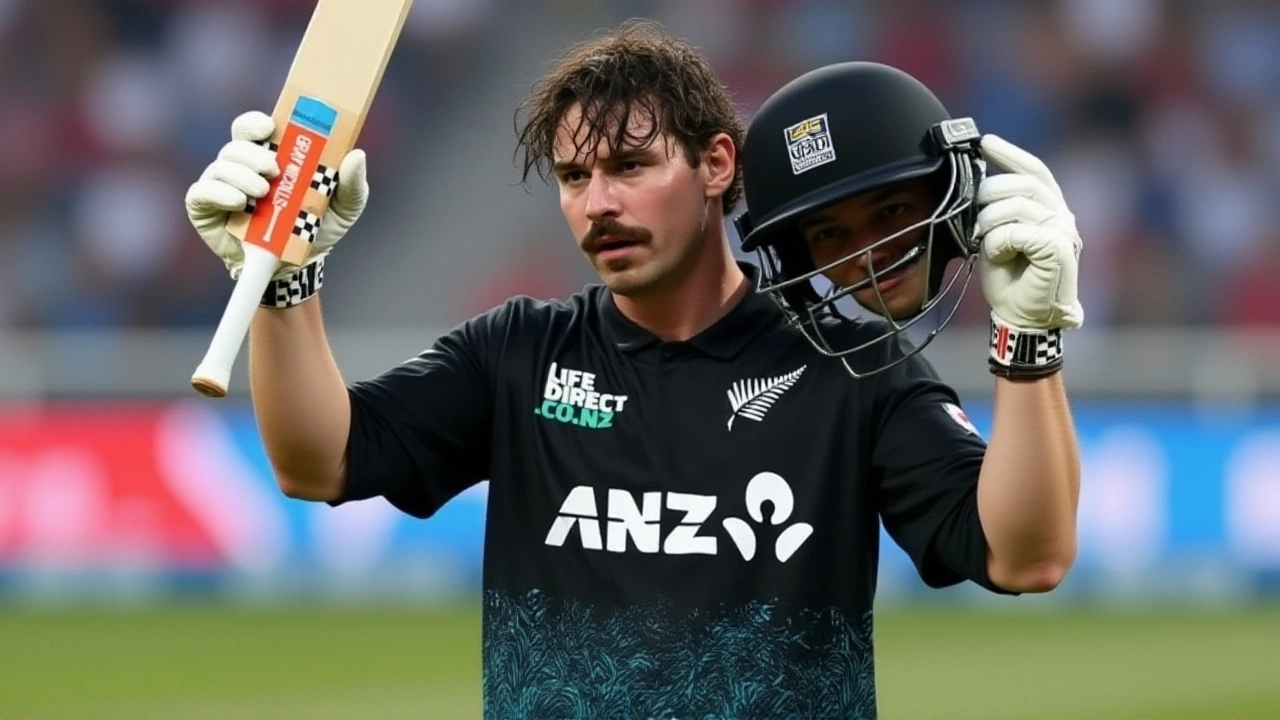
When Tim Robinson, opening batsman for the Black Caps smashed his maiden T20 International century at Bay Oval on 3 October 2025, New Zealand seemed to have turned a nightmare start into a fighting total.
The drama unfolded during the opening match of the KFC T20 seriesBay Oval, a contest pitting the Black Caps against Cricket Australia. By the end of the second over, New Zealand was wobbling at 6 for 3, a scoreboard that would have sent many teams straight back to the pavilion.
Why this innings mattered
New Zealand’s early collapse was a classic "night to forget" for the bowlers, yet the crowd sensed something different. Robinson, just 22, had barely a week of international experience, but his innings proved that raw talent can blossom under pressure.
He became the second youngest New Zealander ever to reach a T20I hundred, trailing only behind prodigy Finn Allen, who set the benchmark in 2020. The milestone mattered not just for the personal record – it was a statement that the Black Caps have a new anchor for their top order.
How the rescue unfolded
The first two overs were a blur of pace and bounce. Robinson’s initial attempts were tentative, with a clipped drive that saw the ball skidding to square leg. "I was still in the learning curve, feeling the surface," he told reporters in the dressing room later.
Mid‑over, he steadied, pulling a short‑ball for a boundary and rotating the strike. A dropped catch by Australian all‑rounder Travis Head at mid‑wicket gave him the lifeline he needed. A second misfield by Tim David allowed a crucial single that broke the early partnership.
From 30 for 2, Robinson accelerated. He hit five fours in the next six balls and clanged a towering six over long‑on, nudging the total past 80. By the 12th over, New Zealand were 130 for 4, and the momentum had shifted.
The final over was a showdown. With 11 runs needed off the last ball, Robinson hooked a short delivery over deep square leg. The six sailed over the ropes, sealing his 100‑run mark and nudging the score to 181 for 6.
Australia’s chase and the final result
Chasing 182, Australia relied on a steady opening partnership before Mitchell Marsh took charge. Marsh’s quickfire 57 off 32 balls, coupled with a brisk 45 from Aaron Finch, steered the Aussies to 187 for 4 in 18.3 overs, clinching a six‑wicket win.
While the Black Caps fell short, the match was hailed as a "tasting menu" of modern T20 cricket – high‑octane batting, fielding drama, and a finish that left fans buzzing.
Reactions from players and experts
New Zealand captain Kane Williamson praised Robinson’s temperament: "He showed exactly what we need – resilience, the ability to adapt, and a big‑hit mindset."
Australian captain Pat Cummins was candid about the missed opportunities: "Those dropped catches were costly. If we’d taken them, the game could've swung dramatically."
Cricket analyst Michele Clark of Sky Sport added: "Robinson’s century is statistically significant. He reached 100 in 55 balls – the fastest century by a New Zealander in T20Is."
What this means for New Zealand cricket
The innings pushes the Black Caps' selection committee to think about Robinson as a permanent opening partner for both T20 and one‑day formats. His strike‑rate of 181.8 puts him ahead of most established stars.
More importantly, the performance provides a morale boost ahead of the next two matches in the series, scheduled for 7 October at Wellington’s Basin Reserve and 10 October at Eden Park.
What’s next for the series
The second T20 will see Australia looking to bounce back. With Marsh in form and the short‑ball attack of Pat Cummins sharpened after the first game, the Black Caps will need another big partnership – perhaps a repeat of Robinson’s heroics.
Meanwhile, selectors for both sides will be eyeing the upcoming ICC T20 World Cup. Robinson’s century could land him a spot in New Zealand’s 15‑man squad, a chance he’ll likely relish.
Historical backdrop: New Zealand’s T20 milestones
New Zealand’s first T20I century came in 2011, when Brendon McCullum smashed 124 against Canada. Since then, only a handful of Kiwis have breached the three‑figure mark – Martin Guptill (2015), Finn Allen (2020), and now Tim Robinson. Each century has signalled a shift in the team’s batting philosophy, moving from conservative starts to aggressive power‑play approaches.
The Bay Oval venue itself has a reputation for favouring batsmen on a flat surface, but in 2025 it proved a testing ground for both seam and swing, making Robinson’s adaptation all the more impressive.
Frequently Asked Questions
How does Tim Robinson’s century affect his chances for the World Cup?
The knock puts Robinson firmly on the selectors’ radar. With a strike‑rate above 180 and a demonstrated ability to rebuild after early wickets, he is now a strong candidate for New Zealand’s 2026 T20 World Cup squad.
What were the key turning points in the match?
Robinson’s partnership with the fifth‑wicket man after 30‑2, the two dropped catches by Travis Head and Tim David, and the final‑ball six were decisive moments that shifted momentum away from an early collapse.
Who were the standout performers for Australia?
Mitchell Marsh’s 57 off 32 balls anchored the chase, while Aaron Finch added a quick 45. Their partnership erased the deficit and secured a six‑wicket victory.
Will the Black Caps change their opening strategy after this game?
Coach Gary Stead said the team will evaluate the opening pair’s approach, but Robinson’s aggressive start suggests a shift toward a more attacking top‑order, especially in power‑play overs.
How did Bay Oval’s pitch influence the outcome?
The surface was initially moving, helping early Indian pacers, but flattened out by the fourth over, giving batters like Robinson the space to accelerate. The evening dew also eased fielding for Australia in the chase.